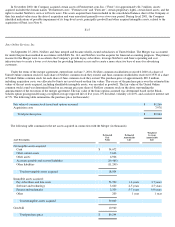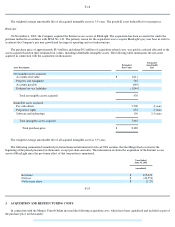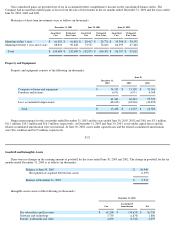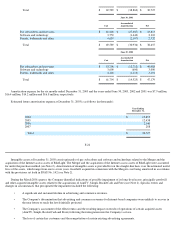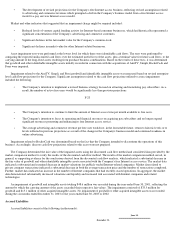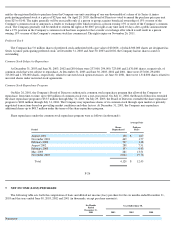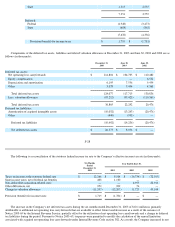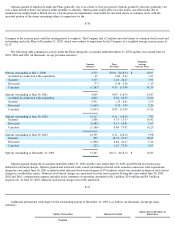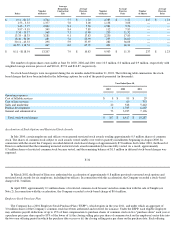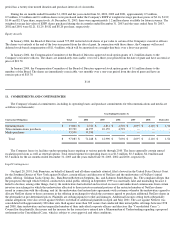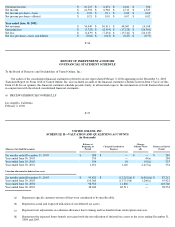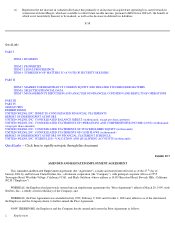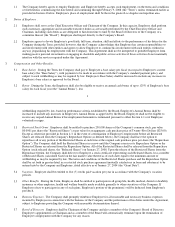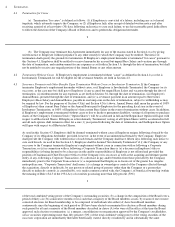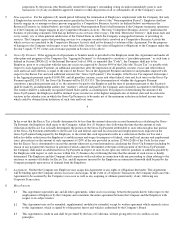Classmates.com 2003 Annual Report Download - page 65
Download and view the complete annual report
Please find page 65 of the 2003 Classmates.com annual report below. You can navigate through the pages in the report by either clicking on the pages listed below, or by using the keyword search tool below to find specific information within the annual report.
deferred tax asset.
The $6.9 million decrease in the Company's net deferred tax assets during the year ended June 30, 2003 is primarily attributable to the
current utilization of net operating loss carryforwards offset by the change in deferred tax liabilities during the year.
The decrease in the valuation allowance of $8.2 million during the six months ended December 31, 2003 is primarily due to the expected
utilization of net operating loss and tax credit carryforwards for the years ending December 31, 2004 and 2005, offset by the additional net
operating loss carryforwards that are available to offset taxable income in the years ending December 31, 2006 and 2007, pursuant to
Notice 2003
-65, for which the associated benefit is not more likely than not to be realized. The decrease in the valuation allowance of
$15 million during the year ended June 30, 2003 was due to the actual utilization of net operating loss and tax credit carryforwards during the
year ended June 30, 2003 as well as the expected utilization of net deferred assets for the year ended June 30, 2004.
Consistent with the prior periods, in determining the need for a valuation allowance at December 31, 2003, the Company reviewed both
positive and negative evidence pursuant to the requirements of SFAS No. 109, including current and historical results of operations, the annual
limitation on utilization of net operating loss carryforwards pursuant to Internal Revenue Code Section 382, future income projections and
potential tax-planning strategies. Based upon the Company's assessment of all available evidence, it concluded that, with the exception of the
net deferred tax assets that are expected to be utilized through December 31, 2005, it is not more likely than not that the remaining deferred tax
assets will be realized. This conclusion is based primarily on the Company's history of net operating losses as compared to only a recent trend
of profitable operations, the potential for future stock option deductions to significantly reduce taxable income, annual net operating loss
limitations under Section 382 of the Code and the need to generate significant amounts of taxable income in future periods, on a consistent and
prolonged basis, in order to utilize the remaining deferred tax assets. The Company will continue to monitor all available evidence and reassess
the
F-29
potential realization of its deferred tax assets. If the Company continues to meet its financial projections and improve its results of operations,
or if circumstances otherwise change, it is reasonably possible that the Company may release all, or a portion, of the remaining valuation
allowance in the near term. Any such release would result in recording a tax benefit that would increase net income in the period the allowance
is released. Additionally, any such release may result in the further reduction of goodwill and intangible assets acquired in connection with the
Merger. Of the $87.2 million of valuation allowance recorded at December 31, 2003, approximately $31.9 million is attributable to the deferred
tax assets acquired in connection with the Merger.
At December 31, 2003, the Company had net operating loss and tax credit carryforwards for federal and state income tax purposes of
approximately $272 million and $324 million, respectively, which begin to expire in 2018 and 2005, respectively. These carryforwards have
been adjusted to reflect the limitations under Section 382 of the Code resulting from the Merger. The Company has also claimed income tax
deductions from the exercise of certain stock options and the related sale of common stock by employees. At December 31, 2003, the total
benefit associated with these stock option deductions was approximately $23.5 million and has been credited directly to additional paid-in
capital.
10. STOCK OPTIONS AND STOCK ISSUANCE PLANS
In connection with the Merger, each outstanding stock option of NetZero and Juno was converted into an option to purchase that number
of United Online common stock shares equal to the product of 0.2000 and 0.3570, respectively, multiplied by the number of shares of common
stock underlying the option. As a result, all stock option share amounts and price per share amounts for prior periods provided herein have been
restated to account for the conversion.
Option Plans
In September 2001, the Board of Directors adopted the United Online, Inc. 2001 Stock Incentive Plan (the "2001 SIP"). The 2001 SIP is a
shareholder-approved plan under which nonstatutory and incentive stock options, as well as direct stock issuances, may be granted to
employees, officers, directors and consultants of the Company. An aggregate of 16.0 million shares have been reserved under the 2001 SIP, of
which 0.4 million shares were available for future grant at December 31, 2003, and 10.5 million options were outstanding at December 31,
2003.
In September 2001, the Board of Directors also adopted the United Online, Inc. 2001 Supplemental Stock Incentive Plan (the "2001 SSIP"
and, together with the 2001 SIP, the "Plans"). The 2001 SSIP is a non-shareholder approved plan under which nonstatutory stock option grants
or direct stock issuances may be made to employees of the Company (or any parent or subsidiary corporation) who are neither officers, nor
Board members at the time of the option grant or direct issuance. The 2001 SSIP, in general, provides for the issuance of stock and stock
options at the fair market value per share of common stock on the option grant date. An aggregate of 4.0 million shares have been reserved
under the 2001 SSIP, of which 33,000 shares were available for future grant at December 31, 2003, and 2.7 million options were outstanding at
December 31, 2003.


